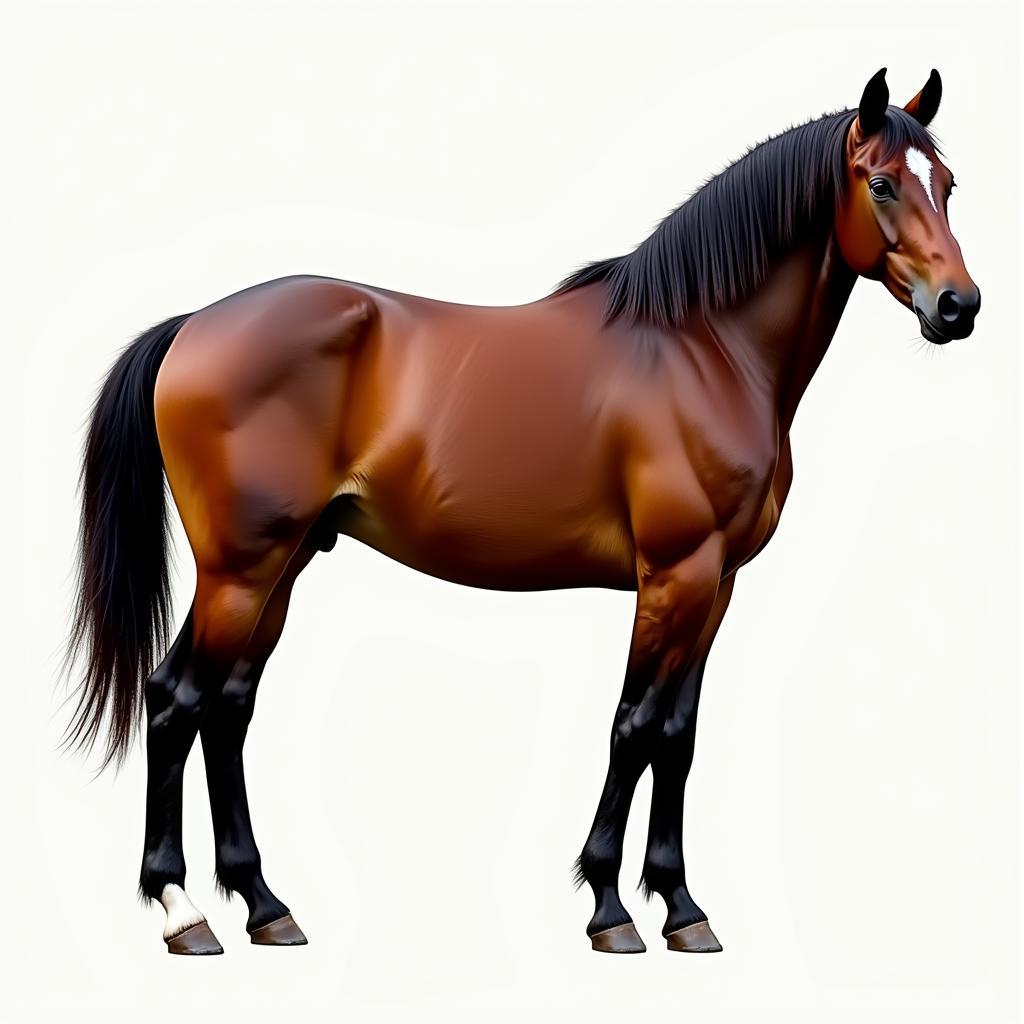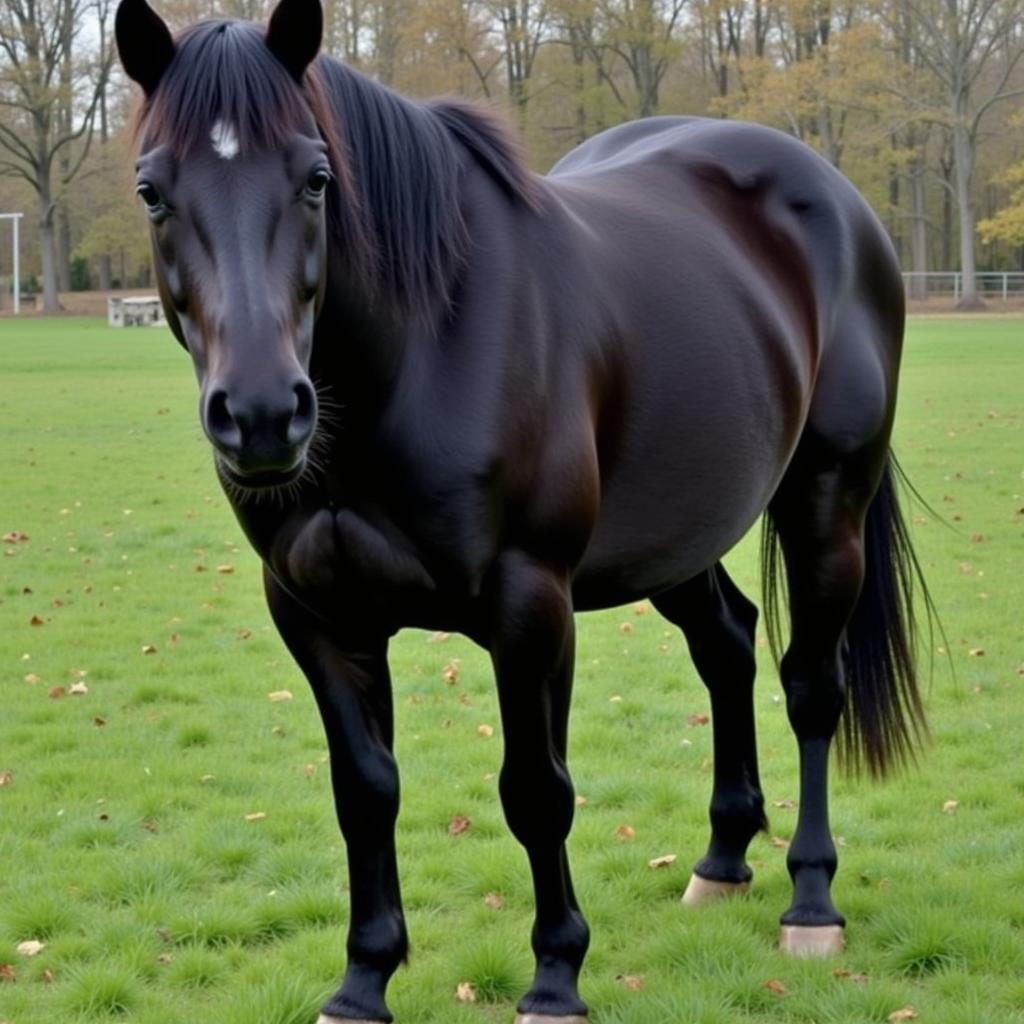The agouti gene in horses plays a crucial role in determining coat color and pattern distribution. Understanding how this gene works can help horse owners appreciate the complexities of equine genetics and predict potential coat colors in offspring.
What is the Agouti Gene?
The agouti gene controls the distribution of black pigment (eumelanin) and yellow/red pigment (pheomelanin) in a horse’s coat. It essentially acts as a switch, determining where on the horse’s body each pigment will appear. A dominant agouti allele (represented by “A”) restricts black pigment to the “points” of the horse—the mane, tail, and lower legs—while allowing the rest of the body to express the underlying base coat color, which often appears as a shade of bay. This is why bay is the most common coat color in many horse breeds. The recessive allele (represented by “a”) allows black pigment to spread across the entire body, resulting in a solid black coat.
After this introduction to the agouti gene, let’s delve deeper into its different expressions. Think of the agouti gene like an artist’s brush, selectively applying color to the horse’s canvas.
 Bay Horse Showing Agouti Gene Expression
Bay Horse Showing Agouti Gene Expression
Agouti and Bay Horses: A Common Pairing
The most familiar example of the agouti gene at work is the bay horse. Bay horses have a reddish-brown body color with black points. This is the classic visual representation of the dominant agouti allele (A). If you are interested in learning more about black horses with unique characteristics, you might find our jet black horse page informative.
The shade of bay can vary from a light sandy bay to a deep, rich mahogany bay, depending on the influence of other modifying genes. However, the presence of black points consistently signals the presence of the agouti gene. Many horse lovers appreciate the striking contrast between the rich body color and the dark points, making bay a highly sought-after coat color.
Agouti’s Influence on Other Coat Colors
While the agouti gene is most visibly apparent in bay horses, it also influences other coat colors. For example, in horses with a chestnut base coat, the agouti gene has no visible effect because chestnuts lack black pigment altogether. However, in horses with a black base coat, the agouti gene can be masked. A black horse could carry the dominant agouti allele (A) without showing it visually. Genetic testing is necessary to determine the presence of the agouti gene in such cases. For those interested in uniquely patterned horses, our patterned horse page provides further insights.
 Black Horse – Potential Agouti Carrier
Black Horse – Potential Agouti Carrier
Breeding for Agouti
When breeding horses, understanding the agouti gene is crucial for predicting the coat colors of offspring. If both parents are homozygous for the dominant agouti allele (AA), all offspring will be bay (assuming a black base coat is present). If one parent is homozygous dominant (AA) and the other is heterozygous (Aa), the offspring will either be bay (AA or Aa). If both parents are heterozygous (Aa), there’s a 25% chance the offspring will be homozygous recessive (aa) and thus black. Some horse owners are fascinated by the contrast of a brown horse white mane. For those interested in a rarer coat color, our perlino horses page offers detailed information.
How Can I Test for the Agouti Gene?
Several equine genetic testing laboratories offer tests to determine a horse’s agouti genotype. These tests typically involve collecting a hair sample or a blood sample and sending it to the lab for analysis. Testing is a valuable tool for breeders and horse owners interested in understanding their horse’s genetic makeup and predicting coat color inheritance patterns.
Conclusion
The agouti gene is a fundamental element in understanding equine coat color genetics. Its influence on the distribution of black and red/yellow pigment gives rise to the beautiful variety of coat colors we see in horses. By understanding the agouti gene, horse owners can appreciate the complexity of equine genetics and make informed decisions regarding breeding. The agouti gene plays a vital role in the fascinating world of horse coat colors.
FAQ
- What is the main function of the agouti gene? It controls the distribution of black and red/yellow pigments in a horse’s coat.
- What does the dominant agouti allele (A) cause? It restricts black pigment to the points.
- What does the recessive agouti allele (a) cause? It allows black pigment to spread across the entire body.
- What is the most common example of the agouti gene at work? The bay horse.
- How can I test for the agouti gene in my horse? Through equine genetic testing laboratories.
- Does the agouti gene affect chestnut horses? No, as chestnuts lack black pigment.
- Can a black horse carry the agouti gene? Yes, but it won’t be visually apparent.
If you are intrigued by the variation in horse coats, you might want to explore our black horse corner.
Need more help? Contact us at Phone: 0772127271, Email: [email protected] or visit us at QGM2+WX2, Vị Trung, Vị Thuỷ, Hậu Giang, Việt Nam. We have a 24/7 customer service team.